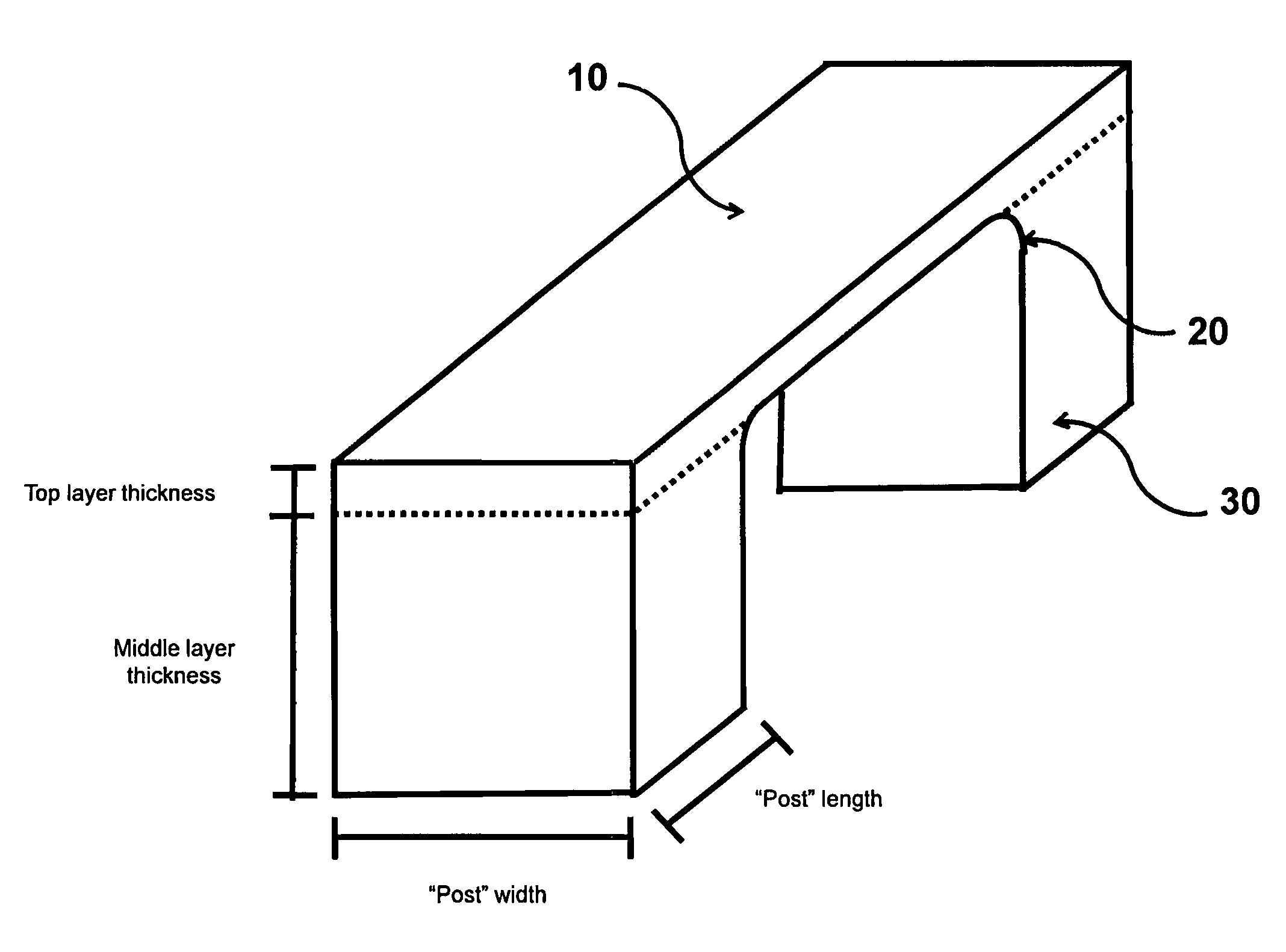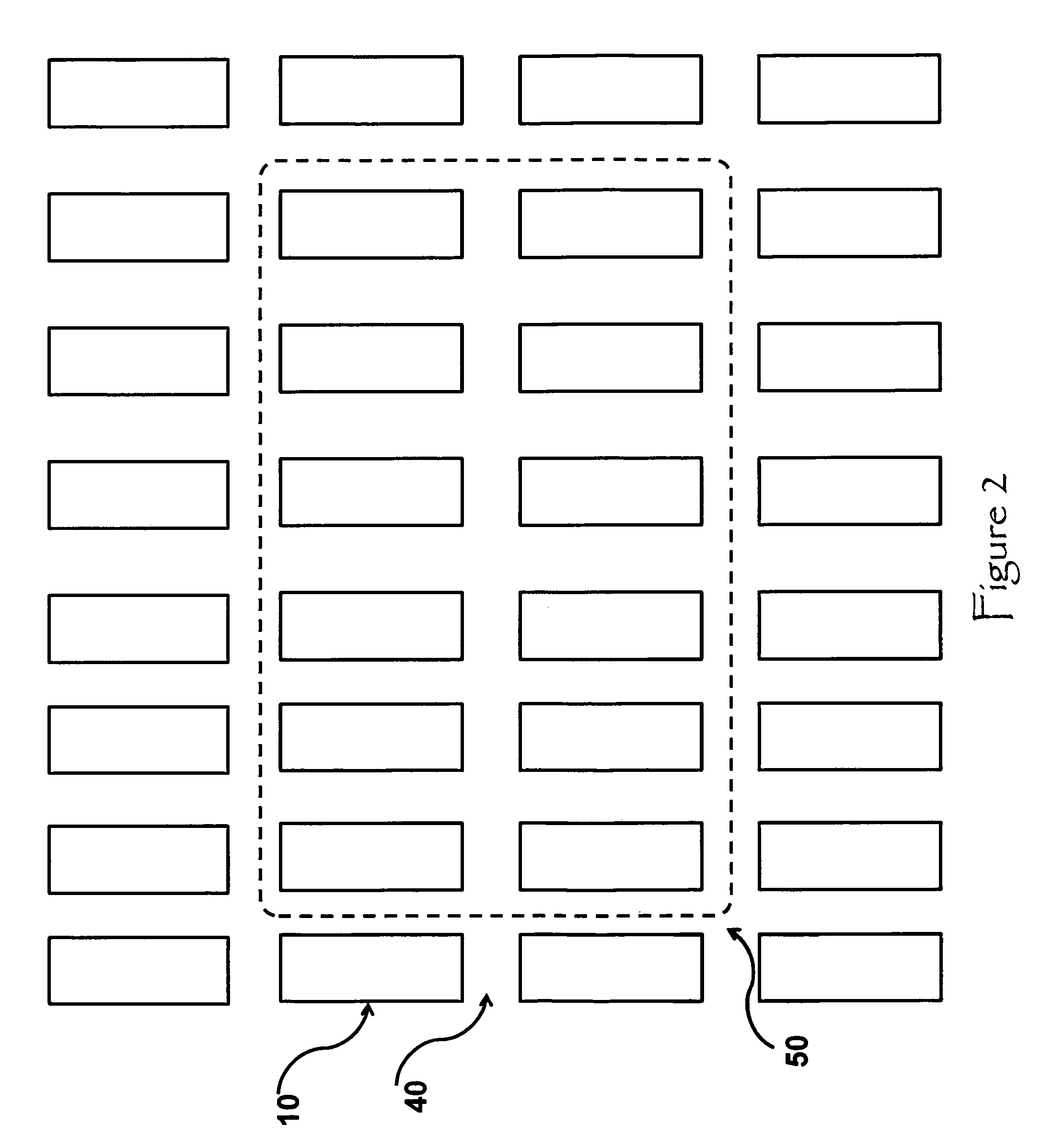Number resolving superconducting nanowire photon detector on multiple surfaces of a substrate
a superconducting nanowire and photon detector technology, applied in superconductor devices, instruments, machines/engines, etc., can solve the problems of relaxation time of the detector, device has no means of measuring spatial resolution, and the resistance of the nanowire rise, so as to achieve the effect of increasing the number resolving efficiency, adding more pixels, and high-efficiency number resolving capability
- Summary
- Abstract
- Description
- Claims
- Application Information
AI Technical Summary
Benefits of technology
Problems solved by technology
Method used
Image
Examples
Embodiment Construction
[0034]Referring to FIG. 1, the fundamental element is a bridge shaped construction of a superconducting nanowire. A plurality of detector elements 10 will form what is called the detection layer (as depicted in FIG. 2). Vertical connections or “posts”30 connect ends of the detector elements 10 to the lead layer via passage ways through wafer. Detector elements 10 and vertical connections 30 form a “bridge” and define the bridge's length and height. The length of the bridge and the height of the bridge can be stretched arbitrarily. The thickness of the detector elements 10, or similarly, the thickness of the detection layer, is highly dependent on physical properties of the superconducting material used in the device. The minimum length of the detector elements 10 and height of the vertical connections 30 of the “bridge” are determined by the same physical properties of the superconducting material as well as the properties of the substrate material, the desired size of the detection...
PUM
 Login to View More
Login to View More Abstract
Description
Claims
Application Information
 Login to View More
Login to View More - R&D
- Intellectual Property
- Life Sciences
- Materials
- Tech Scout
- Unparalleled Data Quality
- Higher Quality Content
- 60% Fewer Hallucinations
Browse by: Latest US Patents, China's latest patents, Technical Efficacy Thesaurus, Application Domain, Technology Topic, Popular Technical Reports.
© 2025 PatSnap. All rights reserved.Legal|Privacy policy|Modern Slavery Act Transparency Statement|Sitemap|About US| Contact US: help@patsnap.com



